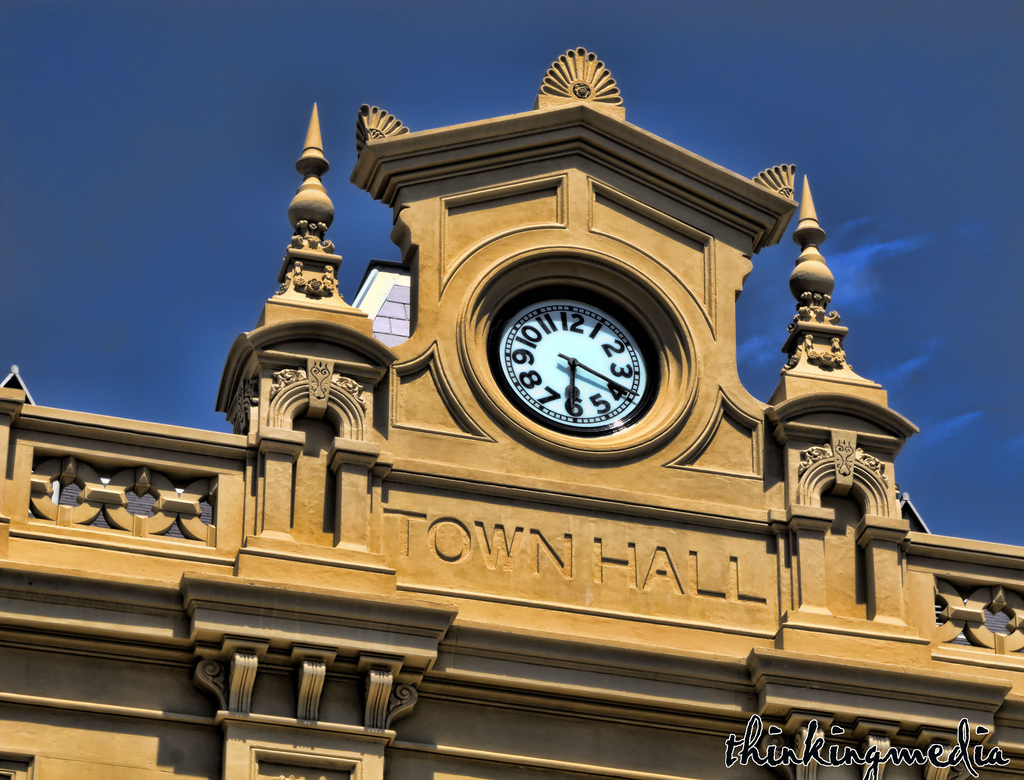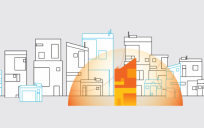Tuesday’s in-person training on the Internet of Things: Connected Government wrapped up with a diverse panel of IoT thought leaders from all levels of government and all sectors, public and private. Though there were neither accusations nor tomatoes hurled, it was a town hall to remember.
The event aimed to address how to better use the network of devices and sensors in order to provide better services to citizens, increase employee productivity, and improve overall effectiveness.
The panel included the following speakers:
- Mark Kneidinger, Acting Director of the Federal Network Resilience (FNR) Division, Department of Homeland Security’s Office of Cybersecurity and Communications
- Sokwoo Rhee, Associate Director of Cyber-Physical Systems (CPS), National Institute of Standards and Technology (NIST)
- Peter Romness, Cybersecurity Solutions Lead for U.S. Public Sector, Cisco
- Kelley Sullivan, Program Manager, Information Technology, U.S. Postal Service
- Chris Steel, Chief Solutions Architect, SoftwareAG
The speakers brought in their array of experience and advice to address the final questions of the day’s events. Though they could not possibly hold all the answers for government’s questions that come with IoT, they certainly addressed important conversations on the topic.
Below, we go over some of the questions and answers that were discussed during the session.
Question: How do you choose where to spend your time, energy, and effort into IoT early on?
Sullivan: For us at the Postal Office, we have to make sure we have a solid business case since we don’t take tax money. We first want to address whether or not there is opportunity to reduce costs and then we try to bring in revenue. For this, we sometimes partner with other agencies, like FEMA.
Steel: It’s important to look across the spectrum of technology and be creative as to where you can increase operational efficiency. Look to work with different agencies and work with them to understand the art of the possible.
Rhee: IoT is so broad and there are so many opportunities to tackle. You have to have some focus. For me, the focus should be creating new jobs and improving the economy. You have to ask, can the way we use IoT do that? What is the eventual impact? That’s how you have to prioritize and focus.
Romness: Some of these IoT projects can actually create revenue. Take Barcelona as a smart city for example. With their better parking enforcement, they generate money. A ticket is automatically enforced if you’re parked somewhere too long. However, you can also reserve a parking space through IoT and you get a better service that you pay for.
Question: How do we do an effective job with risk analysis for IoT?
Kneidinger: Being aware as to the value of one’s assets needs to be a priority. We also need to look at the surrounding threats and what they seek access to. The second element to consider is information. There’s a lot of input from across federal agencies as to threats and issues. How do you put that together? Identifying trends will help us see where we need additional efforts and priorities. The third element is knowing how best to leverage resources we already have. Instead of having a team attack a thousand issues at once, take a look at what’s being prioritized in terms of threats.
Rhee: At the end of the day, it doesn’t just come down to a better firewall. Cybersecurity experience is completely different from the physical realm of IoT. For IoT and addressing threats, we need new expertise.
Question: When it comes to workforce and IoT, the hope is not to have jobs shed but repurposed for other roles. How do you change a workforce dramatically like that and still maintain jobs?
Sullivan: It’s not an easy shift for us. Our unions are partners with us in the Postal Service for this conversation and it means a lot of reinvention. We try and find how we can add additional tasks and extend positions while ensuring there’s always a human carrier.
Rhee: Fifty years ago, there was no job category called, “software engineers.” The world is changing, but even with drones, somebody still has to be an expert in that field to ensure the technology is working properly.
Question: What should people at this event take away for IoT?
Steel: Technology is continuing to grow. We’re going to see sensors everywhere, including wearable computer devices. Make sure to build up your structure and use all the data available to you.
Romness: Look at all the possibilities. In your job, what could IoT do to change and make your job better so you’re more effective with citizens?
Sullivan: It’s important to ask what information was not shared that could be. Was there too much? Where do we draw the line?
Kneidinger: Cybersecurity responsibilities are owned by all. We’re all collectively responsible for securing critical data for government.
Rhee: Look within your agencies and look to other agencies for improvement. Combine expertise and you’ll eventually set real standards. Show the impacts and real value as you practice. If you keep yourselves in silos, you’ll never progress.
The Internet of Things is all about information sharing, particularly between machines and devices. What’s important to take away from this training is that information sharing is just as powerful between the humans behind IoT as it is between the machines.
Photo Credit: Flickr/Balmain





Leave a Reply
You must be logged in to post a comment.